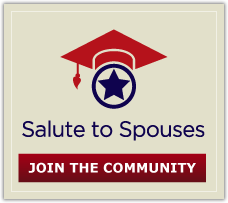A staffing company can be a powerful ally when you search for a permanent position. Yes, I did say permanent. Temp agencies are a thing of the past, as is paying someone to find you a job.
“You should never have to pay an agency, because client companies pay the staffing company for their services and for finding them qualified candidates,” said Jim Stewart, owner of Xpress Employment Professionals’ in Savannah, Ga.
When you work with staffing companies, you register with them, and they give you access to their network of hiring companies. Stewart encourages candidates to register with five or six staffing companies for a wider network of opportunities.
“Most companies are broad, working with light industrial and clerical clients, but as they grow and find their markets, many companies specialize in placing people in certain industries, for example, the medical industry,” Stewart said.
Typically, companies advertise widely for their jobs. So applicants are applying online, in person and by faxing resumes after reading the job advertisement in the local paper.
The staffing company’s job is to pluck the best candidates from that pool.
“A staffing company helps narrow you down from the 400 applicants online to maybe one of three candidates,” Stewart said.
Many companies, he said, may only hire through a staffing company.
“In today’s economy, companies are wary,” he said. “Many are hiring on a temp-to-hire basis. This gives you a way to get in the door of the company.”
Some companies call this an “evaluation hire,” or an “engagement period.” The job candidate works for 90 days while the company evaluates them and their work. If they perform well, at the end of 90 days, they become an official employee.
Staffing companies also offer “direct hire” positions in which candidates are immediately employed. However, Stewart said, most entry-level positions are temp-to-hires.
Ready to sign up with a staffing company? The process is simple.
Choose a local staffing company and fill out an application, typically found on their website. Call the company to make sure they’ve received your application and to make an appointment to come in and introduce yourself.
Treat this meet and greet as a job interview. Stewart encourages candidates to have an idea of the industry they’d like to work in and to dress appropriately for that job when meeting with the staffing company.
He also reminds candidates to bring two forms of identification, most commonly a driver’s license and Social Security card.
During the meeting, you will probably meet with a staffing consultant, discuss your skills and identify what you want to do, as well as what you don’t want to do. Then they can begin to try to match your skills with the best job opportunity.
You also should be able to identify your pay requirements at this meeting. Let the staffing company know the minimum amount you will accept. This helps the company guide you in your job search.
Stewart also stresses the importance of staying in touch with the staffing consultant on a weekly basis to update them on your availability.
Stewart warns that the job hunt still can be lengthy, even with the help of a staffing company.
The job may not come as soon as you want, or it may take longer than you expected to find the exact fit.
Stewart said don’t get discouraged.
“Staffing companies are also advisers,” he said. “When you run into a challenge, they will give you advice on what to do to make you successful.”




